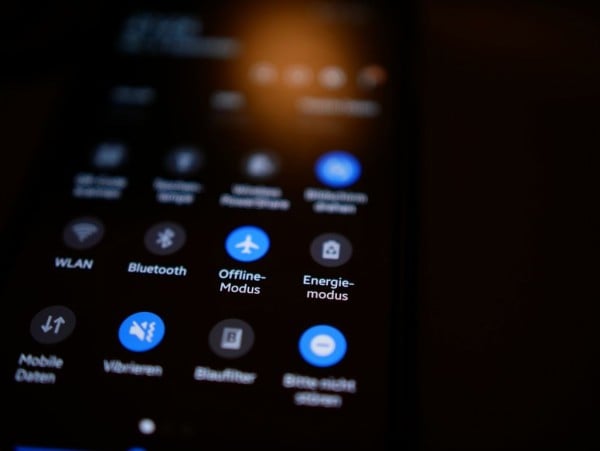In This Article
If you’re using an Android device, you’re probably concerned about malware or virus attacks. Any mobile device connected to the internet is vulnerable to targeted attacks—even as manufacturers continue to invest in improving security on these devices.
A ransomware attack is one of the most ravaging security threats Android users face. This attack involves losing access to your phone and a criminal trying to extort you.
Hackers know your Android device possibly has some vital information. So, they’ll find a way to lay siege and force you into paying up or losing your data.
A ransomware attack is a real threat to your security and one of the most frustrating things that can happen to your Android device. That’s why it’s vital to learn about the early signs of the attack, how to remove ransomware from your Android, and ways to keep your device safe.
What is Android Ransomware

Android ransomware is a type of mobile malware that essentially blocks access to your Android device. The creators of the ransomware will attempt to lock your Android device’s screen or encrypt specific data, denying you access.
You can’t use files or any features on your device during this time. You can only regain access after complying with the hackers’ demands, which usually involve ransom payments. They aim to extort you and further leak data on the Dark Web.
Cybercriminals also take an interest in infiltrating your device with ransomware for several reasons described below.
- Hijack contacts: Some attackers want to gain access to your contact list to collect information such as names, phone numbers, and addresses. They aim to use this information for identity fraud or even send text messages with malicious links. This exercise is called smishing.
- Steal banking information: The most common reason why attackers target individual Android users is to gain access to their crucial bank information via mobile apps. Cybercriminals may also target employees who have access to company credit cards.
- Wipe out your data: Some cyber attackers want to punish you by wiping out all the data on your device. They’ll orchestrate the attack and demand ransom, and after getting what they want, you’ll need to reset your device, in which case you can lose all your data.
- Abuse the functions of your phone: Some ransomware variants can override certain functionalities of your Android device, making it impossible to use. The attackers know this and will take hostage your phone, knowing you can’t use it for any other purpose.
As an Android phone user, you’re a prime target for ransomware due to the large hordes of data stored on your smartphones. Unlike before, when such attacks were reserved for computer devices, ransomware infections on your device are a real threat, requiring you to be cautious.
Even if you give in to the attacker’s demands and pay the ransom, you’re never guaranteed they’ll allow you complete control of your device. You also can’t tell whether they stole the data they wanted. So, the only remedy is to find ways to prevent such attacks from happening.
Types of Android Ransomware Infections

When your Android device falls victim to a ransomware attack, you need to find ways to identify what you’re dealing with. This will empower you to respond effectively and avoid making common mistakes such as paying ransom too quickly.
Here are some of the common ransomware infections that target Android devices and the impact they cause:
- Crypto ransomware: While more commonly associated with PCs, crypto-ransomware can also ensnare Android devices. This variant encrypts your files with a ransom note promising a decryption key in exchange for payment.
- Scareware: Scareware manipulates users into purchasing unnecessary and often ineffective software. Falsely claiming your Android is infected prompts you to buy a purported antivirus solution. The acquired software is usually useless or, worse, may introduce malware.
- Locker ransomware (Screenlockers): This is a predominant ransomware affecting Android devices, denying access to your mobile device. Often disguised as the infamous FBI Virus, screen lockers use fear tactics to coerce victims. However, they are generally easier to remove compared to file encryption ransomware.
- Doxxing: Doxxing is not strictly classified as malware. However, it deserves attention due to the attached ransom component. In doing so, victims face digital blackmail, with private information threatened for public release unless a ransom is paid.
How to Detect Ransomware on Android

The first step to dealing with ransomware attacks on your Android device is to detect and establish what type of ransomware it is. You can then find the right solution and take the best preventative measures to avoid further concerns.
Below are some of the ways to detect ransomware and how to know if someone is spying on your phone via malware.
- Monitor file extensions: Monitoring file extensions remains one of the best strategies to detect suspicious activity on your device. Some extensions are deliberately planted on your device to monitor your actions, further relaying the information to remote attackers.
Implement real-time and historical file activity monitoring on your network file shares to get started. If you detect any irregularities, chances are high that someone is monitoring your device, and it’s only a matter of time before tragedy strikes. - Observe file renames: File renames are not common in daily network file-share activities. However, a ransomware attack incident may result in a surge of file renames. Some file renames may be normal, especially if other users are on a Network. A certain surge in file renames may indicate the presence of ransomware due to the data encryption in the background. To be safe, always set up alerts triggered by a significant increase in file renames.
- Review installed apps for ransomware: Another common way to detect ransomware on your Android device is to review it for unfamiliar or forgotten apps periodically. Some of these apps may have been installed by hackers seeking to infiltrate your device with ransomware.
- -> Open the Settings
- -> Taps on Apps options
- -> Navigate to All Apps List
- Examine the list of unrecognized apps and check their permissions.
- You should also verify essential Android system apps through a Google search if uncertain of their purpose. Any app you encountered that didn’t install is a huge red flag and a potential indicator of something fishy.
- Pay attention to persistent pop-up ads: Persistent pop-up ads are a red flag for potential Adware attempting to redirect users to spoof websites for information theft. Hackers may also manipulate Google Ads to lead you to malicious sites that infect your Android device with ransomware.
Similarly, this could happen via advertising, where malicious code is delivered to your device through a legitimate Ad. You may be targeted with these Ads if you work with big companies—attackers know Ads are vital to a company’s IT infrastructure.
- Monitor data usage: High data usage is a key indicator of suspicious activity on your device. Malicious software, such as ransomware, might use data in the background to send information to unknown servers. It also means your device is under someone else’s control.
For your safety, it’s always recommended to monitor device data usage occasionally and have an idea of what’s going on. Here are a few steps to get you started:- -> Open the Settings app on your Android device.
- -> Go to SIM & Network Settings.
- -> Choose Data & Security.
- -> Check Data Usage for apps consuming high mobile and Wi-Fi data.
- Proceed to uninstall apps that unnecessarily use significant data. Hackers may compromise them to spread ransomware and other malware on your device.
- Utilizing Play Protect: You can also use Play Protect in the Google Play Store to check and identify ransomware. It’s a built-in feature scans apps for malware, even those you downloaded from external sources.
- Follow these simple steps to use Play Protect on your Android device:
- -> Open the Play Store and tap on your profile picture.
- -> Access Play Protect and initiate a scan.
- This will help you identify any ransomware-compromised apps and if there is any malware present on your device. On average, Play Protect can scan up to 125 billion apps to check for malware and other unwanted software on your device.
How to Remove Ransomware From Your Android Device

Facing ransomware on your Android device can be a serious headache. But fear not; you can easily deal with the issues of ransomware on your device by following a few simple steps.
Here is how you can easily remove ransomware from your phone:
- Reboot your Android phone in Safe Mode: Suspecting ransomware? If your phone is acting out, Safe Mode can be a game-changer. It’s like giving your device a fresh start, loading only the essentials.
- To enable Safe Mode:
- -> Press and hold down the power key
- -> Depending on your device, press the power and volume-up buttons simultaneously
- -> Touch and hold the on-screen power button until the “Reboot to safe mode” message appears.
- -> Tap OK.
- (Exiting Safe Mode is as simple as restarting your device.)
- Uninstall any unrecognized apps: Even if your phone seems fine, ransomware can hide in certain apps. Don’t take chances—regularly check your apps and uninstall anything unfamiliar. Before installing new apps, do some research.
Check user reviews on the Play Store or search the app’s name to ensure reliability and see if others have encountered issues. - Restore browser settings: Are you experiencing pop-ups and unwanted redirects in your browser? It might be a sign of malware. Restore your browser settings by accessing Settings, tapping on Apps, finding your phone’s browser, and clearing the cache, history, and cookies. This brings your browser back to its clean state, free from lurking ransomware.
- Clear downloads: Downloads can be a gateway for ransomware, so stay vigilant. Open your File or My Files app, browse the tabs and delete suspicious files. Uninstall associated apps for a thorough cleanup. Regularly clearing downloads not only declutters your device but also prevents unwanted surprises.
Perform a Factory Reset
The ultimate solution—a factory reset clears out anything affecting your Android device, ransomware included. You can reset your phone if other options didn’t worked for you. But before you hit the reset button, keep a backup of your important files. Factory reset will reset your phone and remove everything, including the files and apps you downloaded. Factory resetting and re-downloading files from your backup bypass any file encryptions caused by ransomware attacks. It takes time, but it’s a small price for peace of mind.
Tips to Keep Your Android Device Safe From Ransomware

Keeping your device secure is the ultimate solution to keeping off malware attacks. If you don’t want your data held hostage by ransomware attacks, here’s a quick rundown of what you should do:
- Get apps from official sites: When it comes to apps, try to stick to official sources like the Google Play Store. Third-party platforms might be a tempting shortcut, but they’re not as diligently reviewed, making it easier for bogus apps to slip through the cracks.
- Keep your device updated: Running on outdated versions can open you to attacks. Regularly check for those updates and hit that ‘Install’ button. It’s like putting a security guard on duty for your phone in case of any intrusions.
- Back up your data: Regularly stash away your data on a secure cloud platform. USBs, portable hard drives, or PCs can also play backup roles. If ransomware strikes, you’ve got your data parachute ready to go.
- Keep an eye on app permissions: only give permissions to apps you 100% trust. To check which apps have permission access, go to Settings and click on Security. Navigate to the Device Administrators path to see who’s in charge. Uncheck the unknowns, and if you spot any unfamiliar apps, uninstall them.
Final thoughts
Dealing with ransomware is no walk in the park, but following the steps above can help you regain control of your Android device. Stay vigilant, keep backups, and don’t let ransomware hold your data hostage.











